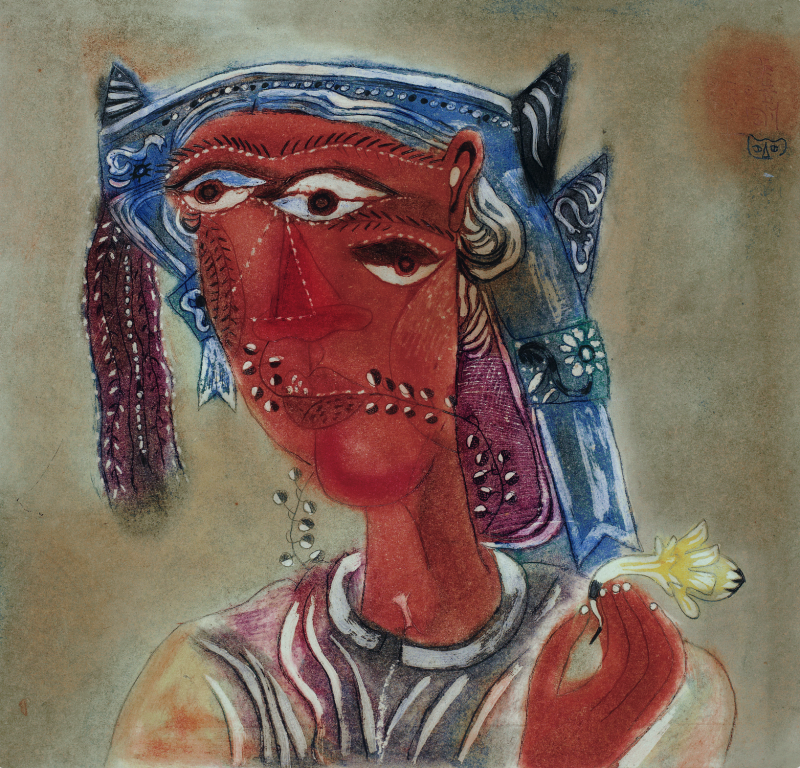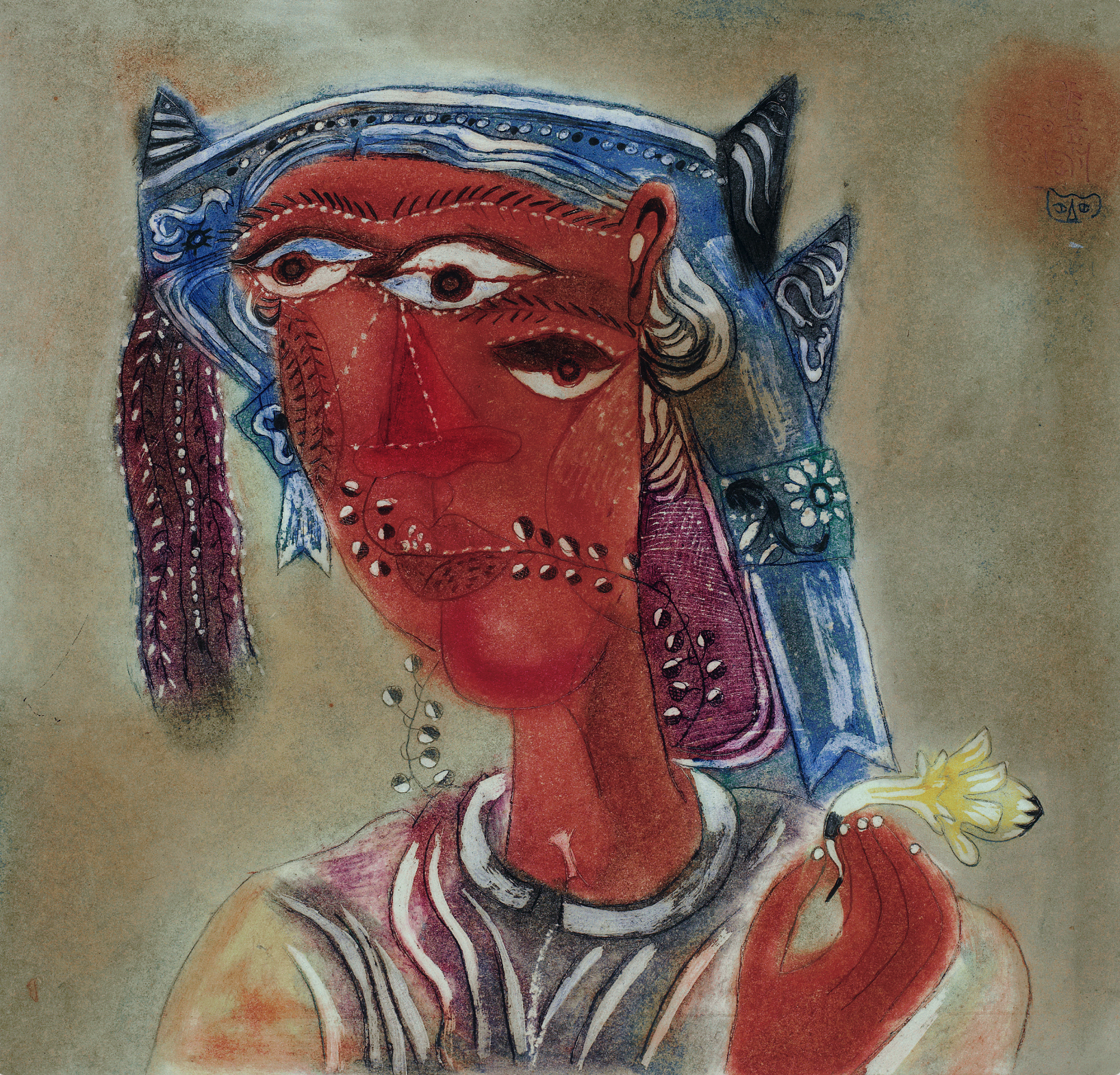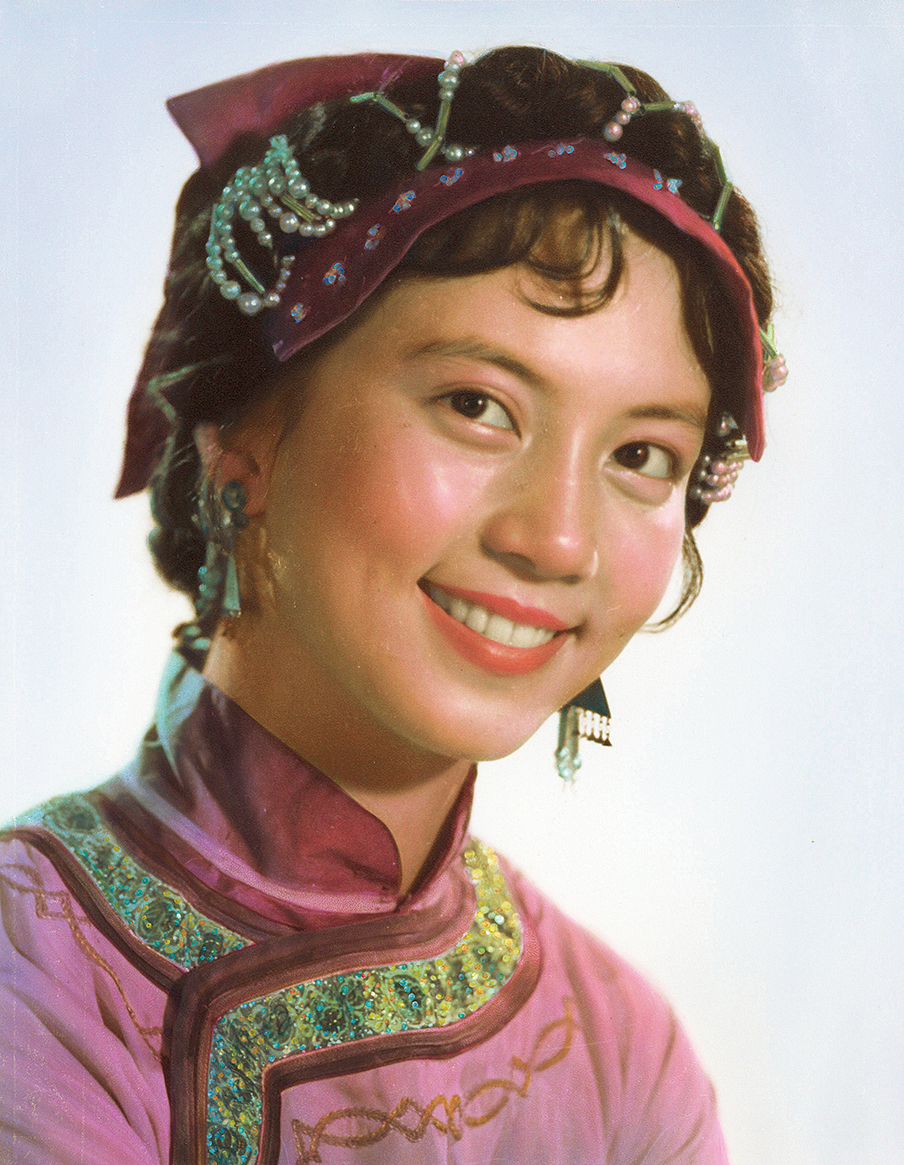
Zhang Xiaogang
Young Girl
1986
Watercolor on Paper
Zhang Xiaogang was born in 1958 and studied at the Oil Painting Department of the Sichuan Fine Arts Institute from 1978 to 1982. Throughout the 1980s and 1990s, his artistic style gradually evolved from realism to an expressive approach characterized by distinctive personal symbols. Since the 1990s, Zhang has employed a cool, restrained, and dreamlike aesthetic to convey collective psychological memories and emotions reflective of his era. His paradoxical depiction and simulation of society, collectives, individuals, as well as family and blood ties, serve as a reinterpretation from artistic, emotional, and existential perspectives. This approach carries profound contemporary significance and vividly encapsulates the unique conditions of contemporary Chinese art.
During the 1980s, when Zhang Xiaogang created Young Girl, he began reading books such as Zen Buddhism & Psychoanalysis and studying the works of Western Symbolist painters like Odilon Redon. Themes of dreams, the body, the soul, religion, and death constantly occupied his thoughts, recurring in both literature and painting. At the same time, Zhang was living in Yunnan, where he engaged in field studies of ethnic minorities and worked on ethnic costume design. The raw vitality of these cultures, expressed through their art and visual symbols, deeply captivated him. He immersed himself in studying these elements, incorporating a strong sense of mysticism into his work. His art from this period blends regional humanistic influences, cultural identity, environmental context, and a heightened awareness of life. Young Girl emerged from this phase of artistic exploration. The painting depicts a young girl dressed in traditional ethnic attire, set against a hazy background. She holds a delicate flower in her hand, while vines intertwine across her face. These elements, along with the rhythmic lines and vibrant colours, shape her distinctive presence and cultural aura. The work reflects the inspiration and resonance Zhang found in the people of China’s southwestern borderlands.



